Aktuelles
Neuer Testzugang: 15.000 eBooks von SSAP
/in Aktuelle Testzugänge, Aktuelles, Newsletter 35/von Cordula GumbrechtBis zum 30.11.2025 haben Sie die Gelegenheit, die SSAP E-Book Plattform先晓书院 zu testen. Sie enthält nahezu sämtliche Medien, die der Verlag Social Sciences Academic Press seit den 1970er Jahren veröffentlicht hat: Dies sind nahezu 15.000 E-Books, 300.000 Artikel, 700.000 Bilder, über 1 Million Diagramme und Grafiken sowie mehr als 3.000 Stunden Audio- und Videomaterial. Die Inhalte werden täglich in Echtzeit automatisch aktualisiert. Rund 95% der Printausgaben liegen mittlerweile digital vor.
Enthalten sind Blaubücher, Sammelbände und großangelegte Materialsammlungen und Editionen. Die Inhalte decken das gesamte Spektrum der Geistes- und Sozialwissenschaften ab, darunter die Belt-and-Road-Initiative, Marxismus, chinesische Modernisierung, soziologische Studien, Länder- und Regionalforschung, Global Governance, die in Großbritannien aufbewahrten Dunhuang-Dokumente sowie Bibliographien. Darüber hinaus bietet die Plattform Materialien für regionale Studien, Branchenentwicklungsforschung sowie Forschung zu Schlüssel- und aktuellen Themen.
Viel Spaß beim Testen!
Ihr Feedback gern an x-asia.
Ihr CrossAsia Team
CrossAsia Talks: Sarah Panzer 04.09.2025
/in Aktuelles, Veranstaltungen, Vortragsreihe "CrossAsia Talks"/von CrossAsia(See English below)
Wir laden Sie herzlich zum ersten japanologischen CrossAsia Talk nach der Sommerpause ein: Am 4. September 2025 ab 18 Uhr (Berliner Zeit) wird Frau Prof. Sarah Panzer (Missouri State University) Einblicke in ihre Forschungsarbeit „Documenting the Lives of Germany’s ‘Forgotten’ Prisoners of War (POWs): Photographs in the Bandō-Sammlung“ geben. Die Vortragende war im Frühling diesen Jahres im Rahmen des Stipendienprogramms der Stiftung Preußischer Kulturbesitz an der Staatsbibliothek in der Ostasienabteilung zu Gast und hat sich intensiv mit der Bandō-Sammlung beschäftigt.
On 7 November, 1914 the German garrison at Tsingtao (Qingdao), following a brief siege, surrendered to Japanese and British colonial troops. The German servicemen captured at Tsingtao were subsequently interned in Japan for the duration of the First World War. After early temporary arrangements—including barracks dating back to the Russo-Japanese War—proved inadequate, a series of POW camps were constructed across Japan. These camps became a kind of wartime ‘Ersatz Deutschland’ for their occupants, with multiple musical and theatrical ensembles organized within the various camps, as well as teams and training groups for popular sports and leisure activities. The differences between the camps notwithstanding, all variously functioned as sites where German identity was translated, represented, and negotiated within the context of extended internment. This fragile connection back to Germany became all the more important as the POWs began to suspect that their existence—to say nothing of their personal sacrifice as prisoners—had been forgotten.
Like their counterparts in Europe, some of the men interned in Japan during the First World War had access to private cameras, which they either brought with them from China or acquired in Japan. They used their cameras to document life in the camps, as well as to capture images of Japan and the Japanese. The photos produced within the camps, whether as discrete albums or as individual snapshots, provide insight into how POWs made sense of their experience in Japan and their ambivalent position as, on the one hand, emissaries of German Kultur, and, on the other, prisoners subject to the authority of the Japanese Empire. Drawing on the work of historians such as Maiken Umbach, who has argued that photographs are often more “usefully thought of as performative props than as documents of historical reality,” in this presentation I interrogate the photos and photo albums created by the German POWs and archived within the Bandō-Sammlung as a window into their understanding of themselves and their relationship to Germany and to Japan.
Die Vortragssprache ist Englisch. Bei Fragen kontaktieren Sie uns unter: ostasienabt@sbb.spk-berlin.de.
Der Vortrag wird darüber hinaus via Webex gestreamt und aufgezeichnet*. Sie können am Vortrag über Ihren Browser ohne Installation einer Software teilnehmen. Klicken Sie dazu unten auf „Zum Vortrag“, folgen dem Link „Über Browser teilnehmen“ und geben Ihren Namen ein.
Alle bislang angekündigten Vorträge finden Sie hier. Die weiteren Termine kündigen wir in unserem Blog und auf unserem X-Account, Mastodon und BlueSky an.
—
We cordially invite you to attend the first japanological CrossAsia Talk after the summer break: On 4 September 2025 from 6 pm (Berlin time), Prof. Sarah Panzer (Missouri State University) will give insights into her research work ‘Documenting the Lives of Germany’s “Forgotten” Prisoners of War (POWs): Photographs in the Bandō Collection’. The lecturer was a guest at the State Library in the East Asia Department in spring 2025 as part of the grant programme of the Stiftung Preußischer Kulturbesitz and worked intensively on the Bandō Collection.
On 7 November, 1914 the German garrison at Tsingtao (Qingdao), following a brief siege, surrendered to Japanese and British colonial troops. The German servicemen captured at Tsingtao were subsequently interned in Japan for the duration of the First World War. After early temporary arrangements—including barracks dating back to the Russo-Japanese War—proved inadequate, a series of POW camps were constructed across Japan. These camps became a kind of wartime ‘Ersatz Deutschland’ for their occupants, with multiple musical and theatrical ensembles organized within the various camps, as well as teams and training groups for popular sports and leisure activities. The differences between the camps notwithstanding, all variously functioned as sites where German identity was translated, represented, and negotiated within the context of extended internment. This fragile connection back to Germany became all the more important as the POWs began to suspect that their existence—to say nothing of their personal sacrifice as prisoners—had been forgotten.
Like their counterparts in Europe, some of the men interned in Japan during the First World War had access to private cameras, which they either brought with them from China or acquired in Japan. They used their cameras to document life in the camps, as well as to capture images of Japan and the Japanese. The photos produced within the camps, whether as discrete albums or as individual snapshots, provide insight into how POWs made sense of their experience in Japan and their ambivalent position as, on the one hand, emissaries of German Kultur, and, on the other, prisoners subject to the authority of the Japanese Empire. Drawing on the work of historians such as Maiken Umbach, who has argued that photographs are often more “usefully thought of as performative props than as documents of historical reality,” in this presentation I interrogate the photos and photo albums created by the German POWs and archived within the Bandō-Sammlung as a window into their understanding of themselves and their relationship to Germany and to Japan.
The lecture will be held in English. If you have any questions, please contact us: ostasienabt@sbb.spk-berlin.de.
The lecture will also be streamed and recorded via Webex*. You can take part in the lecture using your browser without having to install a special software. Please click on the respective button “To the lecture” below, follow the link “join via browser” (“über Browser teilnehmen”), and enter your name.
You can find all previously announced lectures here. We will announce further dates in our blog and on X, Mastodon and BlueSky.
*Mit Ihrer Teilnahme an der Veranstaltung räumen Sie der Stiftung Preußischer Kulturbesitz und ihren nachgeordneten Einrichtungen kostenlos alle Nutzungsrechte an den Bildern/Videos ein, die während der Veranstaltung von Ihnen angefertigt wurden. Dies schließt auch die kommerzielle Nutzung ein. Diese Einverständniserklärung gilt räumlich und zeitlich unbeschränkt und für die Nutzung in allen Medien, sowohl für analoge als auch für digitale Verwendungen. Sie umfasst auch die Bildbearbeitung sowie die Verwendung der Bilder für Montagen. / By participating, you grant the Stiftung Preußischer Kulturbesitz and its subordinate institutions free of charge all rights of usage of pictures and videos taken of you during this lecture presentation. This declaration of consent is valid in terms of time and space without restrictions and for usage in all media, including analogue and digital usage. It includes image processing and the usage of photos in composite illustrations. German law will apply.
Newsletter 34 – CrossAsia Highlights der ersten Jahreshälfte 2025
/in Aktuelles, Datenbanken, Digitalisierung, Fachinformationsdienst, Newsletter, Newsletter 34, SBB, Schulungen, Services, Vortragsreihe "CrossAsia Talks"/von Tristan HinkelLiebe CrossAsia Nutzer:innen,
von filmischen Annäherungen an Tibet über neue Datenbanklizenzen bis hin zu besonderen Schenkungen aus Thailand: Es gibt viel zu berichten. Werfen Sie mit uns in diesem Newsletter einen Blick auf all das, was sich in der ersten Jahreshälfte bei CrossAsia ereignet hat:
Sammlung Wolf Kahlen zum tibetischen Gelehrten Thang-stong-rgyal-po online!
Die Ostasienabteilung der Staatsbibliothek zu Berlin hat die digitalisierte Sammlung des Künstlers und Tibetforschers Wolf Kahlen übernommen. Sie dokumentiert seine Forschungsreisen zwischen 1985 und 1994 durch Tibet, Nepal, China und die Mongolei und umfasst Fotografien, Reisetagebücher und Dokumentarfilme.
Schwerpunkt der Sammlung sind Kahlens Forschungen zu Thang-stong-rgyal-po (1361-1485), einem buddhistischen Gelehrten und Begründer der tibetischen Oper. Die Fotografien stehen für die wissenschaftliche Nutzung frei zur Verfügung, weitere Materialien sind auf Anfrage zugänglich.
Weitere Informationen:
Kontakt: x-asia@sbb.spk-berlin.de
Haben Sie schon den neuen und verbesserten Blauen Leihverkehr genutzt?
Schon seit dem vergangenen Jahr können Sie über den Blauen Leihverkehr sämtliche ausleihfähigen Bestände der Staatsbibliothek anfordern – sowohl die Bestände in ost-, zentral- und südostasiatischen Sprachen als auch die umfassende und stets aktuelle Sammlung westlichsprachiger Forschungsliteratur zu Asien.
Werfen Sie doch direkt mal einen Blick in die CrossAsia Suche!
Neue Publikationen im CrossAsia Open Access Repository
Neben Band 3 der Alliance for Research on East Asia (AREA) Ruhr Working Papers wurden die drei sinologischen Beiträge „Xinyatuoluo : Envoy of Dashi or Wuxun, or Muscat or Sohar or…“, „Of Red Parrots from Dashi 大食 Submitted to the Song Court in the Eleventh Century“ und „Pujiaxin 蒲加心 : an inter-national man of mystery in eleventh century China?“ von Johannes Kurz veröffentlicht. Ebenso die Zusammenfassung des bei der Deutschen Forschungsgemeinschaft (DFG) vorgelegten Abschlussberichts für das Forschungsprojekt „Urban-rural migration and rural revitalization in Japan“. Weitere Blogbeiträge des gleichen DFG-Projekts aus dem Zeitraum Juli 2024 bis Juni 2025 befinden sich derzeit in Vorbereitung für die Freischaltung. Darüber hinaus sind Folien einer Schulung von Seiten des FID Asien zum Umgang mit Forschungsdaten einsehbar. Wir bedanken uns bei allen Beitragenden für die Nutzung dieses Angebots! Open Access ermöglicht unbeschränkten und kostenlosen Zugang zu wissenschaftlicher Information. Dies stärkt die Sichtbarkeit von faktenbasiertem Wissen im Internet. Umfangreiche Informationen rund um Open Access bietet die Webseite des open-access.network.
Das CrossAsia Open Access Repository ist das von der Deutschen Forschungsgemeinschaft empfohlene Fachrepositorium für die Asienwissenschaften (DFG-White List für fachspezifische Repositorien). Es bietet langfristige Archivierung sowie gute Auffindbarkeit der Inhalte dank DOI/URN-Vergabe und Nachweis in den einschlägigen Recherche-Tools. Sowohl Erst- und Zweitveröffentlichungen als auch Forschungsdaten können im CrossAsia Open Access Repository publiziert werden. Bei Fragen zu diesem kostenfreien Service kontaktieren Sie uns gerne unter x-asia@sbb.spk-berlin.de
Neue Datenbanken auf CrossAsia
- 史料纂集 (第3期) Shiryō Sanshū (Teil 3): Bei Shiryō Sanshū (Verlag Yagi Shoten) handelt es sich um eine Materialsammlung historischer Dokumente in moderner Druckschrift. Mit Teil 3 der Onlineausgabe wird das Kokirokuhen mit den Bänden 4-7 der Zeitperioden Muromachi sowie Sengoku fortgesetzt ( 第3期:古記録編 室町・戦国 ④~⑦) und bietet Volltext-Zugriff auf insgesamt 60 Bände der Druckausgabe. Die Datenbank ist über JapanKnowledge abrufbar.
- Digital Tibetan Archives Bonn (DTAB): Die Datenbank Digital Tibetan Archives Bonn (DTAB), die 4268 tibetische Rechtsdokumente aus verschiedenen Archiven und Privatsammlungen vereint, wird in einer neuen Präsentationsumgebung für Sie zur Nutzung zur Verfügung gestellt. Alle Informationen aus der alten Datenbank wurden dabei übernommen und neu aufbereitet. Darüber hinaus wurde die Datenbank stellenweise mit tibetischer Originalschrift ergänzt.
- Chinese Calligraphy and Inscription Collection 歷代書法碑帖集成: Diese Datenbank enthält 4.268 klassische Kalligrafiewerke und Inschriften mit insgesamt 1,7 Millionen Zeichen in verschiedenen Stilen. Die Datenbank ist unterteilt in eine Sammlung ganzer Werke und in eine Sammlung einzelner Schriftzeichen.
- 臺灣時報系列 Taiwan Times: Taiwan Times 臺灣時報 wurde während der japanischen Besatzung (1895-1945) als japanische Zeitschrift vom Taiwanese Governor’s House herausgegeben und enthält Artikel und statistisches Material aus vielen Bereichen. Die Datenbank deckt fast den gesamten Zeitraum der japanischen Besatzung ab und enthält auch den Vorgängerbericht der Taiwan Association, 臺灣協會會報.
- Gale British Library Newspapers Part VII: Southeast Asia, 1806-1977: Diese Datenbank ist der kürzlich veröffentlichte, siebte Teil der digitalen Sammlung British Library Newspapers, der 36 seltene englischsprachige Zeitungen und Zeitschriften umfasst, die auf dem Gebiet der heutigen Staaten Malaysia, Myanmar, Singapur und Thailand über einen Zeitraum von mehr als 170 Jahren – von den frühen 1800er Jahren bis in die späten 1970er Jahre – veröffentlicht wurden.
- Asahi Shimbun Digital: Als neue Lizenz steht für registrierte Nutzer:innen die japanischen Zeitung Asahi Shimbun Digital zur Verfügung. Darüber hinaus sind für die Asahi Shimbun Cross-Search weitere Inhalte lizenziert worden. Weitere Information finden Sie hier.
- China on Film: Die Datenbank präsentiert eine Sammlung von Filmen aus dem British Film Institute (BFI), die vom frühen 20. Jahrhundert – mit einigen der frühesten bekannten Filmaufnahmen Chinas – bis zum Ende der 1990er Jahre reicht. Die Filme wurden von verschiedenen westlichen Filmemachern produziert, die in China gereist sind – darunter professionelle Filmschaffende, Touristen, Expatriates der Kolonialzeit und christliche Missionare. Die Sammlung enthält damit sowohl professionelle Produktionen als auch solche von Amateuren und umfasst Reiseberichte, Wochenschauen und Dokumentarfilme. Jeder Film wird von Audio- und Texttranskriptionen begleitet. Sie finden die Datenbank in unserer Datenbankenliste durch Anklicken der Kategorien Images, Objects, Art und dem Regionencluster Chinese Language Regions bzw. durch Auswahl des Ressourcentyps video.
- UC Berkeley East Asian Library Rubbings: Bis zum 31. August 2025 können Sie die UC Berkeley East Asian Library Rubbings Collection Database testen. Die Datenbank ist durch eine Kooperation der US Berkeley mit dem Verlag der Fudan Daxue 复旦大学出版社 entstanden. Sie untergliedert sich in die acht Teildatenbanken: 摩崖石刻数据库, 碑刻数据库, 墓志、塔铭数据库, 造像数据库, 法帖数据库, 吉金数据库, 画像石数据库 und 砖瓦陶库. Die Abreibungen sind innerhalb der Teildatenbanken chronologisch sortiert. Zu jeder Abreibung finden sich Angaben wie zeitliche Einordnung, Herkunftsort, Abreibungstyp sowie eine kurze Beschreibung der wichtigsten Merkmale. Die Datenbank kann anhand dieser Beschreibungsdaten durchsucht werden. Die Digitalisate sind von ausgezeichneter Qualität.
CrossAsia Talks
Auch in diesem Jahr setzen wir unsere Reihe CrossAsia Talks erfolgreich fort. Bis zum Jahresende erwarten Sie noch einige Highlights:
- 04.09.2025: Prof. Sarah Panzer(Missouri State University) wird Einblicke in ihre Forschungsarbeit „Documenting the Lives of Germany’s ‘Forgotten’ Prisoners of War (POWs): Photographs in the Bandō-Sammlung“ geben. Die Vortragende war im Frühling diesen Jahres im Rahmen des Stipendienprogramms der Stiftung Preußischer Kulturbesitz an der Staatsbibliothek in der Ostasienabteilung zu Gast und hat sich intensiv mit der Bandō-Sammlung beschäftigt.
- 25.09.2025: Dr. Marlene Erschbamer wird in einem Online-Vortrag über „Reading Outside the Lines – Mutterschaft und Mutterrollen in der Barawa Kagyü Tradition des tibetischen Buddhismus“ referieren. Mutterschaft ist eine komplexe und höchst ambivalente Rolle für Frauen. Noch komplexer wird es, wenn Mutterrollen durch eine religiöse Brille betrachtet werden. Dies gilt auch für die Darstellung von Müttern im tibetischen Buddhismus. Um sich ein Bild von Mutterschaft im Laufe der Jahrhunderte zu machen, ist es hilfreich, zwischen den Zeilen, aber auch außerhalb der Zeilen tibetischer Texte zu lesen. Präsentiert werden Auszüge aus tibetischen, sikkimesischen und bhutanesischen Quellen der Barawa-Kagyü-Tradition, die sich zum Teil im Besitz der Staatsbibliothek zu Berlin befinden.
- 23.10.2025: Dr. Maria Faust (Technische Universität Chemnitz) hält einen Onlinevortrag mit dem Titel „Digital Senses, Analogue Landscapes? – A De-Westernized Approach of Landscape Epistemologies in Germany and China“, in dem sie untersucht, wie tiefe Mediatisierung und Digitalisierung unsere sinnliche Wahrnehmung von Landschaften in Deutschland und China verändert und zu einer zunehmend zweidimensionalen, von Sehen und Hören dominierten Landschaftserfahrung führt.
- 20.11.2025: Prof. Joan Judge (York University) wird in einem Onlinevortrag mit dem Titel „New Conceptions: Modes of Knowing in Chinese Encyclopedias for Everyday Life“ neue Perspektiven auf die alltägliche Nutzung medizinischer Praktiken im vormodernen China präsentieren. Neben gedruckten Materialien werden auch Handschriften aus der Sammlung Unschuld berücksichtigt.
Es lohnt auch ein Rückblick auf die vergangenen Talks in diesem Jahr:
- 20.02.2025: Thies Staack (Universität Hamburg) nahm in seinem Vortrag „The Provenance of the Chinese Medical Manuscripts in the Unschuld Collection: New Evidence from an Unpublished Acquisition Notebook“ die umfangreiche Sammlung Unschuld mit chinesischen medizinischen Handschriften in den Blick und widmete sich erstmals und mittels einer bisher unveröffentlichten Quelle aus dem Besitz von Herrn Prof. Paul U. Unschuld der Provenienz dieser Handschriften. (Keine nachträgliche Online-Veröffentlichung)
- 27.03.2025: Im Vortrag „The plight of expectant officials through the lens of the daily Shenbao“präsentierte Frau Prof. Elisabeth Kaske (Universität Leipzig), wie die Shanghaier Zeitung Shenbao die prekäre Situation der „Erwartungsbeamten der späten Qing-Zeit kommentierte – ihre zunehmende Zahl durch den Verkauf von Amtstiteln, ihre oft unsichere Beschäftigung und die wachsende Kritik an diesem System. Diese Analyse stützt Frau Kaske auf die digitale Auswertung der Shenbao-Archive und die damit verbundenen methodischen Herausforderungen.
- 05.05.2025: Lukáš Kubík(Karls-Universität, Prag) hielt den Vortrag „(Un)official Korean Sources on late Koryŏ in the Staatsbibliothek zu Berlin’s East Asian Collection“, in dem er die Erkenntnisse aus seiner Forschung in den Berliner Beständen zu historischen Quellen aus der späten Koryŏ-Zeit genauer vorstellte. Während die offizielle Geschichtsschreibung wichtige Ereignisse dokumentiert, bietet eine Reihe inoffizieller Quellen einzigartige, oft persönliche Perspektiven, die unser Verständnis der Vergangenheit bereichern. Dazu gehören Lehrtexte, die in privaten Akademien verwendet werden, oder Sŏwŏn (書院), die die koreanische Geschichte aus früheren Werken zusammenstellen, um für Schüler einen verständlichen Überblick zu schaffen. Ebenso bedeutsam sind die Munjip (文集), die gesammelten Schriften von Gelehrten, Beamten und Literaten, in denen persönliche Überlegungen und Erfahrungen festgehalten sind, die selten in staatlich sanktionierten Aufzeichnungen zu finden sind. Diese verschiedenen Quellen offenbaren ein komplexes und facettenreiches Bild der historischen und intellektuellen Traditionen Koreas und ermöglichen es uns, weithin akzeptierte Darstellungen und individuelle Standpunkte zu untersuchen.
Wie klangen Buddhas Worte im Originalton? – Eine Tripitaka-Schenkung an die Staatsbibliothek
Am 28. April 2025 fand im Dietrich-Bonhoeffer-Saal der Staatsbibliothek die feierliche Übergabe des 80-bändigen Tripitaka-Sets „World Tipitaka Saj-jhā-ya Phonetic Recitation“ der World Tipitaka Foundation statt. Das 80-bändige Werk erschien erstmals 2016 in Thailand als Gedenkausgabe zu Ehren des thailändischen Königs Bhumibol Adulyadej und der Königin Sirikit und wird an ausgewählte Bibliotheken und akademische Einrichtungen in über 30 Ländern übergeben. Die 40-bändige Teilausgabe zu Ehren König Bhumibol Adulyadej des Großen verwendet zur Wiedergabe des Pali Textes außer der thailändischen Schrift eine phonetische Umschrift, die die exakte Aussprache des originalen Pali-Textes ermöglicht. Die ebenfalls 40 Bände umfassende Teilausgabe, die Königin Sirikit gewidmet ist, enthält neben der speziell entwickelten phonetischen Umschrift in lateinischen Buchstaben und der thailändischen Schrift eine Notation mit Musiknoten, die den authentischen Rhythmus und Ton des Pali-Textes nachvollziehbar macht. Weitere Infos zu dieser außergewöhnlichen Schenkung finden Sie in unserem Blog.
Vernetzung durch Koreanistik: ENKRS-Workshop 2025
Der Workshop 2025 des European Network of Korean Resources Specialists (ENKRS) fand vom 21. bis 24. Mai in Olomouc, Tschechien, statt und wurde vom Lehrstuhl für Asienstudien der Palacký-Universität ausgerichtet. Das diesjährige Thema „Korean Studies Librarianship and Digital Humanities: Opportunities and Challenges for Librarians in Supporting the Next Generation of Korean Studies Scholars“ brachte Fachleute zusammen, um Wissen auszutauschen und über die sich wandelnde Rolle von Bibliothekar:innen im digitalen Zeitalter zu diskutieren. Auch CrossAsia war vor Ort. Mehr erfahren Sie hier im Blog.
Buddhismus und Kunst in Thailand – Die Sammlung Heinrich Damm
Heinrich Damm (1947-2016) hatte seit seiner ersten Begegnung mit Thailand in den frühen 1970er Jahren die Begeisterung für das Land gepackt und sie ließ ihn nicht mehr los. Während zahlreicher Aufenthalte befasste er sich intensiv mit der Kultur, der Kunst und der Geschichte des Landes. Er erlernte Thailändisch und verbrachte längere Zeit in thailändischen Klöstern, um den Buddhismus zu studieren. In fast 50 Jahren trugen er, der beruflich als IT-Fachmann tätig war, und seine Frau Anne Heitzer (1955-2022) eine exzellente Literatursammlung mit dem Schwerpunkt Buddhismus und Kunst in Thailand zusammen. Nach dem Tode der Eheleute übernahm die Staatsbibliothek zum größten Teil als Schenkung ca. 260 Bücher aus der Sammlung, davon 57 in Thailändisch. Mehr Infos zur Sammlung Heinrich Damm finden Sie in unserem Blog.
Meet CrossAsia
Kommen Sie mit uns ins Gespräch! Unser Team wird auf folgenden Konferenzen vertreten sein:
11.08. – 15.08.: International Association for Buddhist Studies (IABS) in Leipzig
20.08. – 22.08.: 19. Deutschsprachiger Japanologentag an der Goethe-Universität Frankfurt
09.09. – 11.09.: 5. Konferenz für Asienforschung der DGA (Deutsche Gesellschaft für Asienkunde) in Bonn
10.09. – 12.09.: 45th EASL conference, London
Und ein Team des FID-Netzwerks Asien wird auf folgenden Veranstaltungen vertreten sein:
08.09. – 12.09.: 35. Deutscher Orientalistentag an der FAU Erlangen-Nürnberg
18.09. – 20.09.: 5. Turkologentag an der Johannes Gutenberg-Universität Mainz
Wir wünschen Ihnen sonnige Sommermonate und einen erfolgreichen Start ins kommende Wintersemester!
Ihr CrossAsia Team
Sammlung Kahlen ist online
/in Aktuelles, Sammlungen, Themenportale/von Antje ZiemerDie Ostasienabteilung der Staatsbibliothek zu Berlin – Preußischer Kulturbesitz hat im Sommer 2023 die umfangreiche Sammlung des Künstlers und Tibetforschers Wolf Kahlen (geb. 1940) übernommen. Die Sammlung dokumentiert über drei Jahrzehnte Forschung zur tibetisch-buddhistischen Kultur, insbesondere zu Thang-stong-rgyal-po (1361-1485).
Wolf Kahlen, emeritierter Professor für Intermediäre Kunst an der Technischen Universität Berlin, führte zwischen 1985 und 1994 fünf Expeditionen durch Tibet, Nepal, Spiti, China und die Mongolei durch. Im Zentrum seiner Forschungen stand Thang-stong-rgyal-po, ein bedeutender buddhistischer Gelehrter, Architekt und Begründer der tibetischen Theaterform Ache Lhamo.
Kahlens interdisziplinärer Ansatz, der künstlerische Dokumentation mit wissenschaftlicher Feldforschung verbindet, führte zu einer reichen, größtenteils noch unpublizierten Materialsammlung, die hier erstmals zugänglich gemacht wird. Die digital vorliegende Sammlung umfasst mehrere tausend Fotografien, sechs detaillierte Reisetagebücher der Forschungsreisen (1985-1994) sowie 28 Dokumentarfilme, unter anderem mit Aufzeichnungen tibetischer Rituale und kultureller Praktiken. Die Materialien dokumentieren Klöster, Rituale, Landschaften und das kulturelle Leben in den bereisten Regionen und enthalten ethnographische Beobachtungen, wissenschaftliche Notizen und Originalskizzen. Einen Überblick über die gesamte Sammlung erhalten Sie im Themenportal zur Sammlung Kahlen
Die fotografischen Bestände stehen der wissenschaftlichen Nutzung zur Verfügung. Aufgrund vertraglicher Vereinbarungen und datenschutzrechtlicher Bestimmungen sind die Reisetagebücher und Filme ausschließlich für berechtigte Forschungszwecke nach vorheriger Anfrage zugänglich.
Kontakt für Anfragen zu den Tagebüchern und Dokumentarfilmen: x-asia@sbb.spk-berlin.de
In summer 2023, the East Asia Department of the Berlin State Library – Prussian Cultural Heritage Foundation acquired the extensive collection of artist and Tibet scholar Wolf Kahlen (born 1940). The collection documents over three decades of research into Tibetan Buddhist culture, with a particular focus on Thang-stong-rgyal-po (1361–1485).
Wolf Kahlen, professor emeritus of Intermediary Art at the Technical University of Berlin, conducted five expeditions through Tibet, Nepal, Spiti, China and Mongolia between 1985 and 1994. His research focused on Thang-stong-rgyal-po, an important Buddhist scholar, architect and founder of the Tibetan theatre form Ache Lhamo.
Kahlen’s interdisciplinary approach, which combines artistic documentation with scientific field research, resulted in a rich collection of material, most of which is still unpublished and is being made available here for the first time. The digital collection comprises several thousand photographs, six detailed travel diaries from his research trips (1985-1994) and 28 documentary films, including recordings of Tibetan rituals and cultural practices. The materials document monasteries, rituals, landscapes and cultural life in the regions visited and contain ethnographic observations, scientific notes and original sketches. An overview of the entire collection can be found in the thematic portal for the Kahlen collection
The photographic holdings are available for scientific use. Due to contractual agreements and data protection regulations, the travel diaries and films are only accessible for authorised research purposes upon prior request.
Contact for enquiries about the diaries and documentary films: x-asia@sbb.spk-berlin.de
Neuer Testzugang: 2804 Abreibungen aus der UC Berkeley East Asian Library
/in Aktuelle Testzugänge, Aktuelles/von Cordula GumbrechtBis zum 31. August 2025 können Sie die UC Berkeley East Asian Library Rubbings Collection Database testen. Die Datenbank ist durch eine Kooperation der US Berkeley mit dem Verlag der Fudan Daxue 复旦大学出版社 entstanden.
Sie untergliedert sich in die acht Teildatenbanken: 摩崖石刻数据库, 碑刻数据库, 墓志、塔铭数据库, 造像数据库, 法帖数据库, 吉金数据库, 画像石数据库 und 砖瓦陶库.
Die Abreibungen sind innerhalb der Teildatenbanken chronologisch sortiert. Zu jeder Abreibung finden sich Angaben wie zeitliche Einordnung, Herkunftsort, Abreibungstyp sowie eine kurze Beschreibung der wichtigsten Merkmale. Die Datenbank kann anhand dieser Beschreibungsdaten durchsucht werden. Die Digitalisate sind von ausgezeichneter Qualität.
Wir wünschen Ihnen viel Vergnügen beim Ausprobieren und freuen uns, wie immer, über Ihr Feedback an: x-asia@sbb.spk-berlin.de.
Neu auf CrossAsia: China on Film
/in Aktuelles, Datenbanken/von Cordula GumbrechtAb sofort können wir Ihnen den Zugang zur Datenbank China on Film anbieten.
Die Datenbank präsentiert eine Sammlung von Filmen aus dem British Film Institute (BFI), die vom frühen 20. Jahrhundert – mit einigen der frühesten bekannten Filmaufnahmen Chinas – bis zum Ende der 1990er Jahre reicht. Die Filme wurden von verschiedenen westlichen Filmemachern produziert, die in China gereist sind – darunter professionelle Filmschaffende, Touristen, Expatriates der Kolonialzeit und christliche Missionare. Die Sammlung enthält damit sowohl professionelle Produktionen als auch solche von Amateuren und umfasst Reiseberichte, Wochenschauen und Dokumentarfilme. Jeder Film wird von Audio- und Texttranskriptionen begleitet. Sie finden die Datenbank in unserer Datenbankenliste durch Anklicken der Kategorien Images, Objects, Art und dem Regionencluster Chinese Language Regions bzw. durch Auswahl des Ressourcentyps video.
Über diesen gelangen Sie auch zur Datenbank Socialism on film. Die Filme dieser Sammlung, gleichfalls aus dem BFI, sind fast ausschließlich in der kommunistischen Welt produziert und dann für die Verbreitung im Westen bearbeitet worden. Socialism on Film zeigt den Blick auf Krieg, Geschichte, aktuelle Ereignisse, Kultur und Gesellschaft aus dem Blickwinkel der sozialistischen Kamera und umfasst Dokumentationen, Wochenschauen und Reportagen aus fast dem gesamten 20. Jahrhundert und Ländern wie der UdSSR, China, Vietnam, Korea und einem Großteil Osteuropas, aber auch der DDR, Großbritannien und Kuba.
Job Openings: Projektkoordinator:in (w/d/m) und Wissenschaftliche:r Mitarbeiter:in (w/d/m)
/in Aktuelles, Fachinformationsdienst, Job openings/von CrossAsiaLiebe Nutzer:innen, liebe Kolleg:innen,
die Ostasienabteilung der Staatsbibliothek zu Berlin sucht zwei neue Kolleg:innen! Im Folgenden finden Sie beide Stellenankündigungen:
Dear users and colleagues,
The East Asia Department of the Staatsbibliothek zu Berlin is looking for two new team members! Please find both job postings below:
Projektkoordinator:in (w/d/m) FID Asien und CrossAsia
Als Projektkoordinator:in verantworten Sie die operative Koordination und strategische Weiterentwicklung des DFG-geförderten Fachinformationsdienstes Asien (FID Asien) und des Portals CrossAsia – von der Projektsteuerung bis hin zu Öffentlichkeitsarbeit und Monitoring. Die Bewerbungsfrist läuft bis zum 18.07.2025.
Alle Informationen zum Stellenangebot finden Sie hier.
Project Coordinator (f/d/m) FID Asien and CrossAsia
As Project Coordinator, you will be responsible for the operational coordination and strategic development of the DFG-funded Specialized Information Service Asia (FID Asia) and the CrossAsia portal – from project management to public relations and monitoring. The application deadline is July 18, 2025.
All information about the vacancy can be found here.
Wissenschaftliche:r Mitarbeiter:in (w/d/m)
Ihre Aufgaben als wissenschaftliche:r Mitarbeiter:in sind vielfältig und umfassen die strategische Weiterentwicklung von CrossAsia und der digitalen Services – von der Konzeption und Evaluierung elektronischer Ressourcen über die Entwicklung von Digital Humanities-Tools bis hin zur fachspezifischen Informationsvermittlung für die Sinologie/China-Studien und der Beschaffung chinesischsprachiger Medien. Die Bewerbungsfrist läuft bis zum 18.07.2025.
Alle Informationen zum Stellenangebot finden Sie hier.
Reasearch Librarian (f/d/m)
Your responsibilities as Subject Specialist for China are diverse and include the strategic development of CrossAsia and its digital services – from the conception and evaluation of electronic resources to the development of Digital Humanities tools, specialised information services for Sinology/Chinese Studies, and the acquisition of Chinese-language media. The application deadline is 18 July, 2025.
All information about the vacancy can be found here.
Wir freuen uns auf Ihre Bewerbung wie auch über die Weiterleitung der Ausschreibungen an potenziell Interessierte. Vielen Dank!/ We look forward to receiving your application, and please share this job posting with anyone who might be interested. Many thanks!
Ihr / Your
CrossAsia Team
Connecting Through Korean Studies: German Librarians at ENKRS 2025
/in Aktuelles, SBB/von Jing Hu(German translation below)
The 2025 workshop of the European Network of Korean Resources Specialists (ENKRS) took place from May 21 to 24 in Olomouc, Czech Republic, hosted by the Department of Asian Studies at Palacký University. This year’s theme, “Korean Studies Librarianship and Digital Humanities: Opportunities and Challenges for Librarians in Supporting the Next Generation of Korean Studies Scholars,” brought together specialists to share expertise and discuss the evolving role of librarians in the digital age.
Two colleagues from the Korea Section of the East Asia Department at the Berlin State Library, Mrs. Jing Hu and Mrs. Cherim Adelhoefer, participated in the event. During the pre-conference session on May 21, Mrs. Adelhoefer gave a presentation on cataloguing practices at the Berlin State Library, offering insights into workflows for Korean materials. She also engaged in lively exchanges with librarians from other countries on cataloguing standards and practices. In the main conference session on May 22, Mrs. Jing Hu presented an overview of digital scholarship initiatives within the East Asia Department, introducing services such as the N-gram service and the ITR (Integrated Text Repository) explorer. Her talk highlighted Stabi’s strategies for supporting digital research in East Asian Studies.
The workshop also served as a valuable networking platform, particularly for colleagues from Germany. In addition to Mrs. Hu and Mrs. Adelhoefer, three other librarians from Freie Universität Berlin, the University of Tübingen, and Heidelberg University attended the event. Together, they discussed shared challenges in Korean Studies librarianship and explored opportunities for future collaboration to address common tasks.
Founded in 2018, the ENKRS now has 99 members. Its inaugural workshop was held at Freie Universität Berlin in 2018. The network continues to grow, welcoming not only European librarians but also colleagues from the United States and South Korea. This year’s event brought together 49 participants from 13 countries. We look forward to next year’s ENKRS workshop – possibly in Berlin, and ideally at our Stabi – to the continued exchange of ideas and best practices in Korean Studies librarianship!
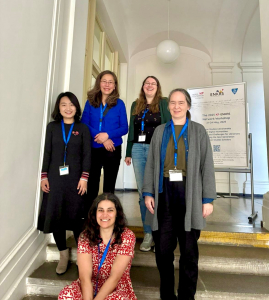
From left to right: Jing Hu (Stabi), Cherim Adelhoefer (Stabi), Annika Timmins (Universität Tübingen), Gesche Schröder (Heidelberg University); in the middle: Liliane Sperr (Freie Universität Berlin).
Vernetzung durch Koreanistik: Deutsche Bibliothekarinnen auf dem ENKRS-Workshop 2025
Der Workshop 2025 des European Network of Korean Resources Specialists (ENKRS) fand vom 21. bis 24. Mai in Olomouc, Tschechien, statt und wurde vom Lehrstuhl für Asienstudien der Palacký-Universität ausgerichtet. Das diesjährige Thema „Korean Studies Librarianship and Digital Humanities: Opportunities and Challenges for Librarians in Supporting the Next Generation of Korean Studies Scholars“ brachte Fachleute zusammen, um Wissen auszutauschen und über die sich wandelnde Rolle von Bibliothekar*innen im digitalen Zeitalter zu diskutieren.
Zwei Kolleginnen aus der Korea-Referat der Ostasienabteilung der Staatsbibliothek zu Berlin, Frau Jing Hu und Frau Cherim Adelhoefer, nahmen an der Veranstaltung teil. Am 21. Mai, während der Vorkonferenz, hielt Frau Adelhoefer einen Vortrag über die Katalogisierungspraxis an der Stabi und gab Einblicke in die Arbeitsabläufe bei der Erschließung koreanischer Materialien. Zudem tauschte sie sich lebhaft mit Kolleg*innen aus anderen Ländern über Katalogisierungsstandards und -methoden aus. In der Hauptkonferenz am 22. Mai stellte Frau Jing Hu die digitalen Forschungsinitiativen der Ostasienabteilung vor. Dabei präsentierte sie unter anderem den N-Gram-Service und den ITR-Explorer (Integrated Text Repository). Ihr Vortrag beleuchtete Strategien der Stabi zur Unterstützung digitaler Forschung in den Ostasienstudien.
Der Workshop diente auch als wertvolle Plattform zur Vernetzung, insbesondere für Kolleginnen aus Deutschland. Neben Frau Hu und Frau Adelhoefer nahmen auch drei weitere Bibliothekarinnen von der Freien Universität Berlin, der Universität Tübingen und der Universität Heidelberg teil. Gemeinsam diskutierten sie über gemeinsame Herausforderungen im Bereich der koreanistischen Bibliotheksarbeit und loteten Kooperationsmöglichkeiten für zukünftige Projekte aus.
Das ENKRS wurde 2018 gegründet und zählt heute 99 Mitglieder. Der erste Workshop fand 2018 an der Freien Universität Berlin statt. Das Netzwerk wächst stetig weiter und begrüßt nicht nur europäische, sondern auch Kolleginnen aus den USA und Südkorea. In diesem Jahr nahmen 49 Teilnehmerinnen aus 13 Ländern an der Veranstaltung in Olomouc teil. Wir freuen uns bereits auf den nächsten ENKRS-Workshop – eventuell in Berlin, idealerweise bei uns in der Stabi – sowie auf den weiteren Austausch zu Ideen und Best Practices in koreanistischen Bibliotheksarbeit!

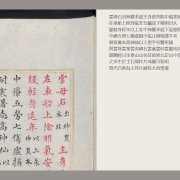
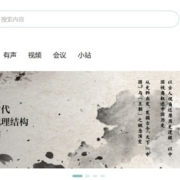
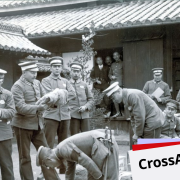 Staatsbibliothek zu Berlin – PK, Bandō-Sammlung, Depositum des Deutschen Instituts für Japanstudien, Signatur H 52
Staatsbibliothek zu Berlin – PK, Bandō-Sammlung, Depositum des Deutschen Instituts für Japanstudien, Signatur H 52


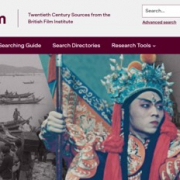
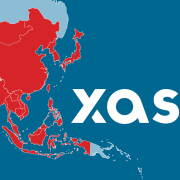
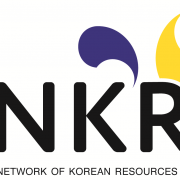
 SBB-PK
SBB-PK